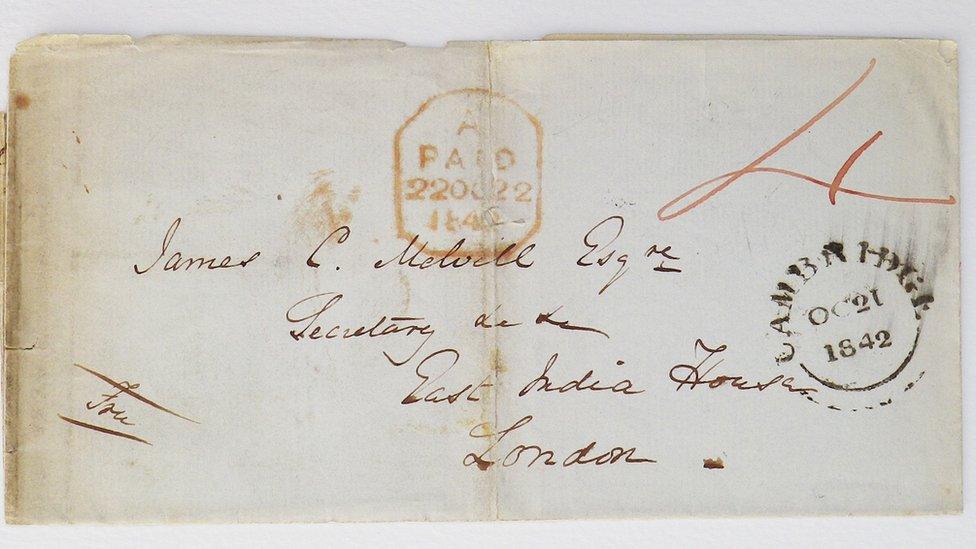The Vocabularist: Keep pushing the envelope
- Published

Vladimir Putin's Syria policy is among the things that have recently been referred to as "pushing the envelope". But where did "velop" come from?
In English, "envelop" and similar words to do with covering or containing arrived from France in the Middle Ages.
Earlier than that, the origins of the early French word "voloper" are murky - the Latin volvere - meaning to roll - may figure in its ancestry, or possibly a Germanic word related to English "wrap".
About 1390, Chaucer's villainous Pardoner taunts the innkeeper: "For he is moost envoluped in synne." And the carpenter's wife in the Miller's Tale wears something called a "voluper" which seems to have been a white headcloth with tapes attached.
"Envelop" was a favourite word of Edmund Spenser, who wrote in the Faerie Queene (1590) of a mantle "in gold and ermines fair enveloped".
"Develop" (previously "disvelop") came into English later, though French had had it since the 12th Century. It progressed elegantly through meanings to do with unwrapping to discovering what is hidden, to its present use suggesting improving and perfecting something.
In the early 17th Century it could be used for unrolling a banner. In the 18th Century, painter Joshua Reynolds spoke of the skill needed "to develope the latent principles of our art".
The noun "envelope" was at first any kind of container. The first envelope-making machine for letters was patented in the mid-1840s.

Almost an envelope - but wrappers for letters were all home made until the 1840s.
A container is also a boundary. Novelist Arnold Bennett wrote of his desire to "depict the deeper beauty while abiding by the envelope of facts".
And boundaries can be pushed - back, in or out, so that "push the envelope" means extending something beyond its current limits.
Envelopes can be boundaries drawn round families of curves - but any boundary will do. An architectural journal in 1970 referred to windows protruding "to push the building envelope beyond what was technically the building line".
Tom Wolfe's 1979 book The Right Stuff - about test pilots and the Space Race - used "pushing the outside of the envelope" to refer to taking a plane to its very technical limits. The expression featured heavily in the 1983 film adaptation.
By 1986 William Safire was using "push the envelope" pure and simple in his newspaper column.
Jargon never stands still, and now depictions of what kind of envelope is being pushed can produce remarkable metaphors. This week US animal feed producers were praised for "pushing the forage envelope".

The Vocabularist
Select topic "language" to follow the Vocabularist on the BBC News app

Subscribe to the BBC News Magazine's email newsletter, external to get articles sent to your inbox.